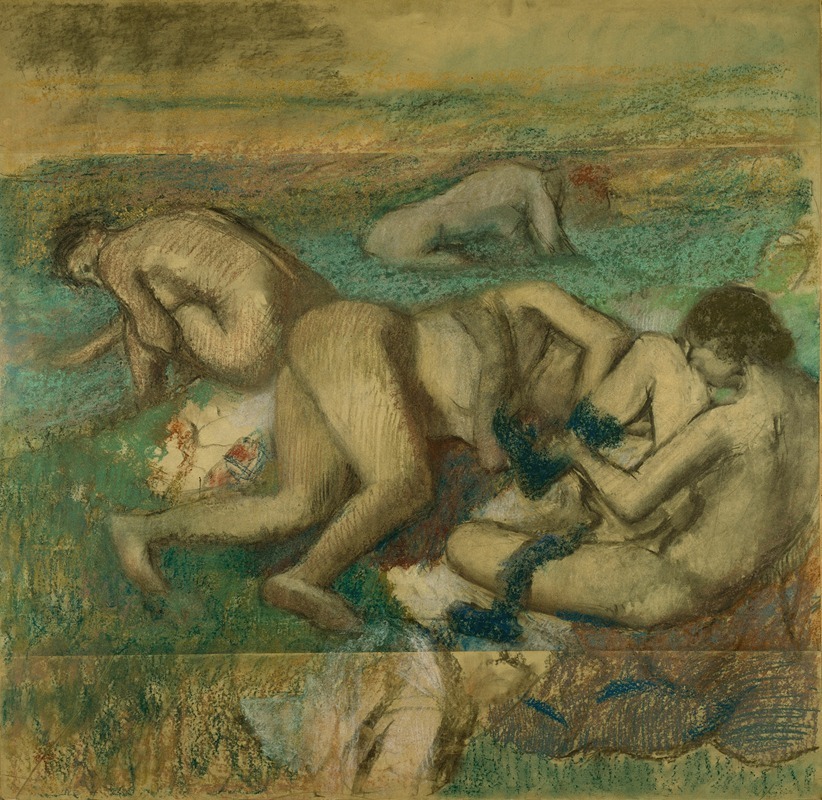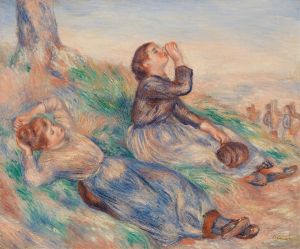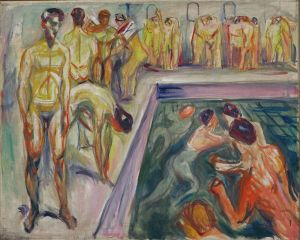
The Bathers
A hand-painted replica of Edgar Degas’s masterpiece The Bathers, meticulously crafted by professional artists to capture the true essence of the original. Each piece is created with museum-quality canvas and rare mineral pigments, carefully painted by experienced artists with delicate brushstrokes and rich, layered colors to perfectly recreate the texture of the original artwork. Unlike machine-printed reproductions, this hand-painted version brings the painting to life, infused with the artist’s emotions and skill in every stroke. Whether for personal collection or home decoration, it instantly elevates the artistic atmosphere of any space.
Edgar Degas, a prominent French artist associated with the Impressionist movement, is renowned for his innovative approach to capturing modern life through his paintings, sculptures, and drawings. One of his notable works is "The Bathers," which exemplifies his fascination with the human form and his skill in depicting movement and everyday scenes.
"The Bathers" is a series of works by Degas that explore the theme of women bathing. These works are not confined to a single painting but rather encompass a variety of compositions, including pastels, drawings, and paintings, created over several years. Degas's interest in this subject reflects his broader artistic preoccupation with the female form and his desire to capture intimate, candid moments of modern life.
Degas's approach to "The Bathers" is characterized by his use of unusual perspectives and cropping, which were innovative at the time. He often depicted his subjects from unexpected angles, such as from above or behind, creating a sense of immediacy and spontaneity. This technique allowed him to focus on the natural, unposed movements of the women, emphasizing the grace and fluidity of their actions.
In these works, Degas employed a variety of media, including oil paints, pastels, and charcoal. His use of pastels, in particular, is noteworthy for its vibrant colors and soft textures, which lend a sense of warmth and intimacy to the scenes. The pastel medium allowed Degas to blend colors seamlessly and create delicate transitions between light and shadow, enhancing the three-dimensionality of the figures.
Degas's "The Bathers" series is also notable for its departure from traditional representations of the nude. Rather than idealizing the female form, Degas presented his subjects in a more naturalistic manner, capturing the imperfections and individuality of each figure. This approach was part of a broader trend in 19th-century art that sought to depict reality more authentically, moving away from the idealized forms of classical art.
The settings of "The Bathers" are typically domestic interiors, such as bathrooms or bedrooms, which further emphasize the private nature of the scenes. Degas's attention to detail in these environments, from the textures of fabrics to the play of light on surfaces, adds depth and context to the compositions. These elements contribute to the overall atmosphere of the works, inviting viewers to engage with the intimate world of the subjects.
Degas's exploration of the bathing theme was influenced by his interest in Japanese prints, which often depicted similar subjects with an emphasis on line and composition. The influence of Japanese art is evident in Degas's use of flat planes of color and his focus on the decorative aspects of the compositions.
"The Bathers" series by Edgar Degas remains an important part of his oeuvre, showcasing his innovative techniques and his ability to capture the nuances of human movement and form. These works continue to be celebrated for their artistic merit and their contribution to the development of modern art, reflecting Degas's enduring legacy as a master of capturing the essence of contemporary life.


















